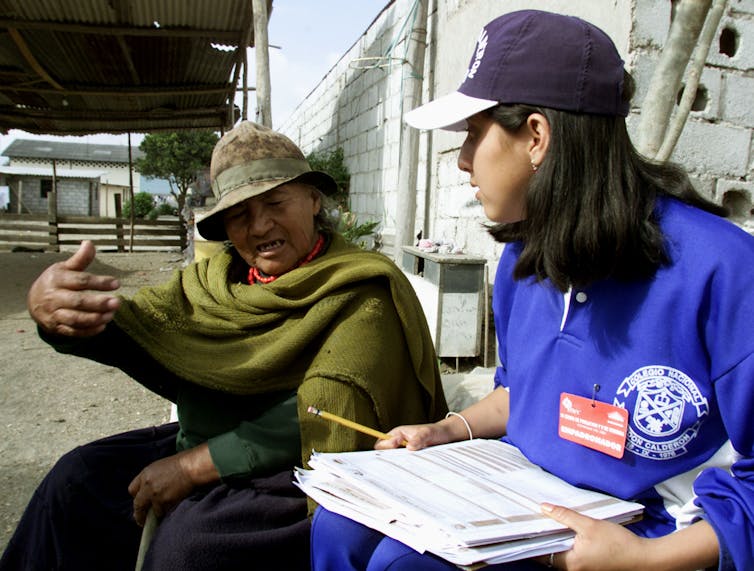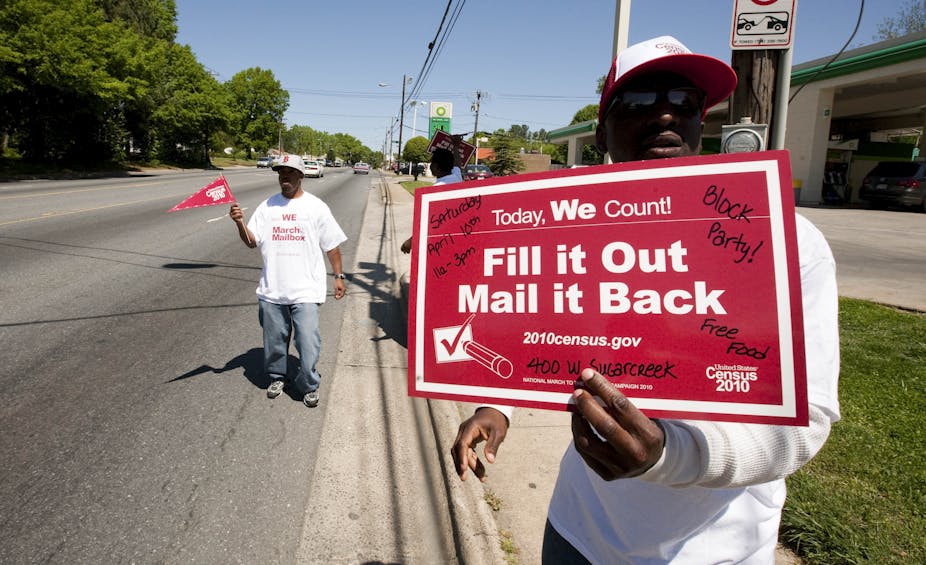The 2020 U.S. Census is still two years away, but experts and civil rights groups are already disputing the results.
At issue is whether the census will fulfill the Census Bureau’s mandate to “count everyone once, only once, and in the right place.”
The task is hardly as simple as it seems and has serious political consequences. Recent changes to the 2020 census, such as asking about citizenship status, will make populations already vulnerable to undercounting even more likely to be missed. These vulnerable populations include the young, poor, nonwhite, non-English-speaking, foreign-born and transient.
An accurate count is critical to the functioning of the U.S. government. Census data determine how the power and resources of the federal government are distributed across the 50 states. This includes seats in the House, votes in the Electoral College and funds for federal programs. Census data also guide the drawing of congressional and other voting districts and the enforcement of civil and voting rights laws.
Places where large numbers of people go uncounted get less than their fair share of political representation and federal resources. When specific racial and ethnic groups are undercounted, it is harder to identify and rectify violations of their civil rights. My research on the international history of demography demonstrates that the question of how to equitably count the population is not new, nor is it unique to the United States. The experience of the United States and other countries may hold important lessons as the Census Bureau finalizes its plans for the 2020 count.
Let’s take a look at that history.
Census pioneer and promoter
In 1790, the United States became the first country to take a regular census. Following World War II, the U.S. government began to promote census-taking in other countries. U.S. leaders believed data about the size and location of populations throughout the Western Hemisphere could help the government plan defense. What’s more, U.S. businesses could also use the data to identify potential markets and labor forces in nearby countries.
The U.S. government began investing in a program called the Census of the Americas. Through this program, the State Department provided financial support and the Census Bureau provided technical assistance to Western Hemisphere countries taking censuses in 1950.
United Nations demographers also viewed the Census of the Americas as an opportunity. Data that were standardized across countries could serve as the basis for projections of world population growth and the calculation of social and economic indicators. They also hoped that censuses would provide useful information to newly established governments. The U.N. turned the Census of the Americas into a global affair, recommending that “all Member States planning population censuses about 1950 use comparable schedules so far as possible.” Since 1960, the U.N. has sponsored a World Census Program every 10 years. The 2020 World Census Program will be the seventh round.
Counting everyone isn’t easy
Not all countries went along with the program. For example, Lebanon’s Christian rulers feared that a census would show Christians to be a minority, undermining the legitimacy of their government. However, for the 65 sovereign countries taking censuses between 1945 and 1954, leaders faced the same question the U.S. faces today: How can we make sure that everyone has an equal chance of being counted?

In 1950, Ecuador’s democratic government saw the census as a means of “conquering the national territory administratively.” The military mapped rural areas that had not previously been drawn so that the census wouldn’t miss people living in remote places. They believed the census would help them establish control in areas that had previously remained out of reach due to decades of political turmoil and economic crisis.
In the process, indigenous communities who feared that the census would be used to further oppress them took up armed resistance. The government promised indigenous leaders that participation would help, not hurt their communities. However, the census did not include any racial or ethnic classification. As a result, the data it produced could not be used to address racial discrimination faced by Ecuador’s indigenous communities. It wasn’t even possible to determine the size of the indigenous population or to judge whether it had been counted completely.
Meanwhile in Nigeria, the government expected that its first post-independence census in 1962 would provide an empirical basis for representation in what was then a new democracy. Officials in Nigeria’s Western Region feared that residents would be unable to participate because the census asked for age, which many people didn’t know, simply because there had never been a reason to know. To facilitate participation, officials instructed local leaders to compile lists of dates of local historical events that people could use to determine when they had been born.
Despite these efforts, Nigeria’s 1962 census was plagued by accusations from officials in the various regions that some areas had been counted more completely than others. The government ultimately repudiated the results and repeated the count in 1963. The failure of this census weakened public faith in the ability of the government to either count or rule such a large and diverse population.
In the U.S., demographers began to recognize during World War II that the census was not counting everyone equally. Research showed that African-Americans were less likely to be counted than were white Americans. As a result, places with large nonwhite populations were underrepresented in the House and Electoral College. While the U.S. census has been able to reduce the overall undercount since then, it still disproportionately misses African-Americans and other people of color today.
Historical challenges to census-taking show that widespread participation is key to an accurate census count. These events have helped demographers understand that people are more likely to participate when they understand the process; are not worried that their participation will be used against them; and can easily identify themselves in the categories used by the census. Adequate funding to follow up with people who don’t respond by mail, internet or telephone is also critical.
A census that counts everyone is probably impossible. But if the census is to guide the equitable distribution of political power and federal resources, it must also strive to count people as equitably as possible.

